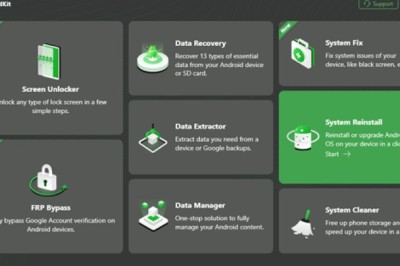views
While many have been claiming for years that blogging is dead, it seems that it can still be a very effective marketing technique. That being said, to drive organic traffic to your blog, you will likely need to utilize a diverse selection of tactics. Here are the best writing tips to help you increase organic traffic to your blog.
#1 Target a Variety of Keywords
First of all, you need to think about the basics. Search engine optimization is essential for generating organic traffic which is why you need to assess the quality of your content and the relevance of the topics you are writing about. Moreover, you need to examine your target keyword list and revise it if necessary.
The best approach to choosing keywords is to focus on diversity. Find both general and specific keywords, long-tail and short-tail keywords, industry-specific and trending keywords. It’s also good practice to regularly update your list so that it doesn’t become outdated. If you are writing about one of the latest popular topics, then you should also use keywords specific to the current discussion.
#2 Build Your Link Profile Gradually
Another thing that is important for SEO is your link profile. Building it gradually will help you get the best results. Use three types of links:
· Internal Links: Links in your content that point to different pages on your blog or website. These can help you keep users on your site for a longer period of time and increase average session time.
· External Links: Links in your content that point to other websites. These are usually used to support the claims you are making by linking to the source where you found a specific statistic or quote.
· Backlinks: Links on other websites that point to the content on your blog. These are harder to get, but they are crucial for improving your search rankings. You can get them through guest blogging, influencer marketing, and media coverage.
#3 Optimize Content for Voice Search
In addition to optimizing your content for regular searches, it’s also important to optimize it for voice search. Nowadays, many people use voice assistants to make searches. Apple’s Siri, Samsung’s Bixby, Amazon’s Alexa, and Google’s Assistant are among the most popular examples of these. But voice searches are different from regular searches.
Voice search keywords need to be longer. Moreover, these keywords usually sound more like sentences than simple words or phrases. If you don’t know how to write such query-like keywords for voice search optimization, you can hire a professional writer from reputable writing services to help you with this.
#4 Aim to Appear in Featured Snippets
Featured snippets are pieces of information that appear at the top of Google search results. If information from your site appears in a Featured Snippet, you can expect to get more clicks to that specific page from where the information was pulled. Obviously, many website owners and bloggers aim to appear in Featured Snippets precisely because of this.
In most cases, Featured Snippets are meant to answer a query quickly. They provide definitions, steps, and lists. Consequently, to appear in Featured Snippets, you need to include lists in your content. You can also identify the questions your audience usually has about the topic and try to answer them in short, succinct paragraphs.
#5 Cross-Post and Promote Elsewhere
Cross-posting content and promoting your blog content elsewhere is another way to increase organic traffic. The best part is that when you cross-post content, you don’t actually have to write new content. You can just repurpose a blog post into an Instagram post while not including all the information. Then, you can direct curious readers to your blog to check out the full article.
Likewise, try to actively promote your blog elsewhere. You can do this on your social media profiles, YouTube, other blogs, and so on. Some of the most popular techniques such as guest posting are perfect for this.
#6 Regularly Update Old Content
Evergreen topics are important to cover for a steady stream of traffic, but your content that covers such topics can eventually get outdated. That’s why you need to regularly update old content to ensure that it is up to date with the latest developments in the topic. You can even repurpose or recycle old content if you don’t want to simply update it.
Because updating old content can take a lot of time, you might want to outsource this process. Hire a professional writer from the custom writing reviews site Rated by Students to analyze your old content and identify the parts that need to be updated. Likewise, repurpose old content by creating other types of content from your old blog articles (e.g. infographics, videos, social media posts).
#7 Curate User-Generated Content
Another way to reduce the amount of content you have to create from scratch without missing out on the benefits of new content is by curating user-generated content. UGC is great as social proof (e.g. reviews of your products and services), but it can also be a way to further connect with your audience on a personal level.
By reposting and republishing UGC on your blog, you can show that you value the opinions of your readers and appreciate their feedback. Moreover, such content can also help you generate more traffic on your blog – after all, this is still content, even if it was created by your readers rather than yourself.
#8 Experiment with Content Formats
As mentioned earlier, it’s definitely a great idea to repurpose your old content into new forms. However, it’s also worth experimenting with formats when you are creating new content. Here are the content formats you can try:
· Blog Posts, Articles
· Social Media Posts
· Infographics
· Photographs, Illustrations
· Charts, Schemes, Tables
· Videos, Animations, GIFs
· Case Studies, Whitepapers, Surveys
· E-Books, Webinars, Live Streams, Podcasts
#9 Guest Post on Other Blogs and Sites
As explained earlier, guest posting can be a great way to promote your blog elsewhere. In addition to that, it’s also an ideal way for getting backlinks and building your link profile. If someone visits your blog through a link, it won’t be considered organic traffic. On the other hand, thanks to guest posting, your blog will rank higher in search results, so you will still get more organic traffic.
Guest posting can take a lot of time, so you might also want to outsource it. Find an experienced writer with the help of the writing services reviews site Top Writing Reviews and work with them to create content you could use for guest blogging.
#10 Add FAQ Sections at the End
Last but not least, try to add FAQ sections at the end of your blog posts and articles (if they fit into the structure of your post). In the FAQ section, try to answer the most common questions related to the topic you are writing about. Make your answers short and to the point.
These question-answer-type sections could help you appear in Featured Snippets. In addition to that, your answers could also appear in the People Also Search For section in Google search results, so you might generate even more traffic thanks to that.
Conclusion
All in all, you will need to utilize a wide variety of different techniques to help you generate more traffic on your blog. However, if you use them smartly, you will definitely succeed. Utilize the tips in this article to help you create a powerful strategy for your blog and start attracting more readers,























Comments
0 comment